On 12 August 1926, there was a huge explosion in Csepel, next to the Weiss Manfréd Steel and Metal Works. Munition, five wagons of gunpowder, 12 wagons of black powder, and five more wagons of high-impact, organic explosives called ecrasite exploded. This was a quarter of the country's ecrasite reserves. The damage was estimated at 25 billion crowns. The blaze and sound of the exploding munitions could be seen and heard throughout Budapest.
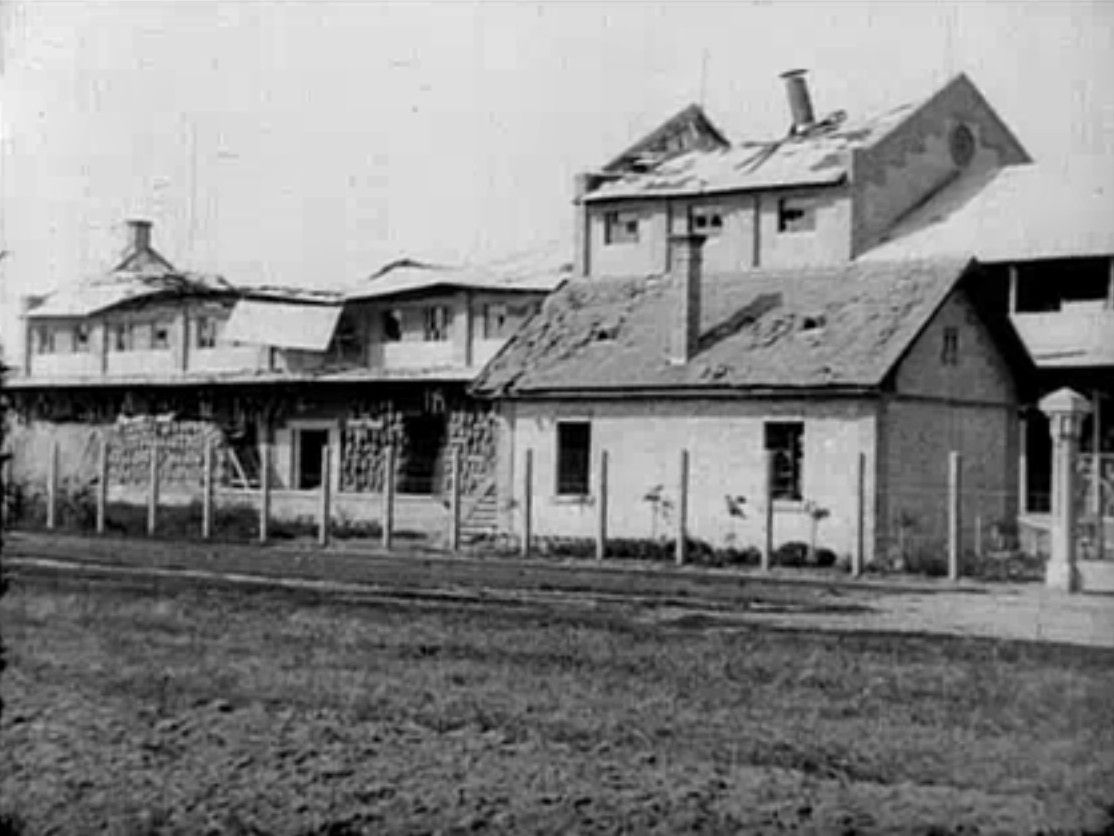
The explosion of 12 August 1926 caused the greatest damage in Csepel and Budafok (Source: National Film Institute)
An official announcement was made about the explosion, details of which are quoted from the 13 August 1926 issue of the Nemzeti Ujság:
“At 6:45 pm this afternoon, for unknown reasons, an explosion occurred in the ammunition plant of the Csepel munitions factory, which borders the well-known Weisz Manfréd site. It has been found so far that two major and two minor detonations shook the air. The location of the explosion is the gunpowder ramparts in which the gunpowder required for production was stored. In these gunpowder is housed in individual booths, from which the force of the explosion can only be exerted upwards. ”
These particular ramparts were 200 feet long, into which holes were cut and wooden booths were built in which munition and explosives were stored. This gunpowder rampart was protected from the Danube by an equally long dam and wire fence, and there was an armed sentry on the rampart.
Thanks to the storage mode, the force of the explosion was able to exert force mostly upwards. Thus, although many were injured in the detonation, the catastrophe did not claim any human lives. Although, the Weiss Manfred factory employed 3,600 workers at the time of the explosion. The material damage, on the other hand, was enormous. The explosion in Csepel and Budafok caused serious damage, broke the window panes and swept the tiles off the roofs.
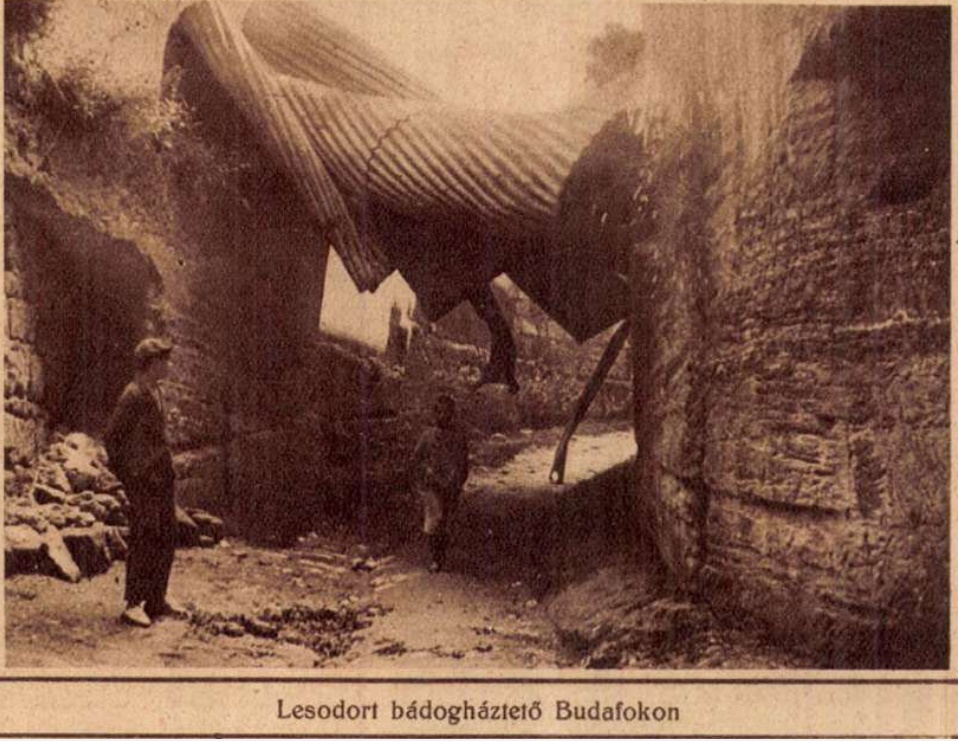 The disaster caused serious damage to many residential buildings (Source: Pesti Napló Képes Melléklete, 22 August 1926)
The disaster caused serious damage to many residential buildings (Source: Pesti Napló Képes Melléklete, 22 August 1926)
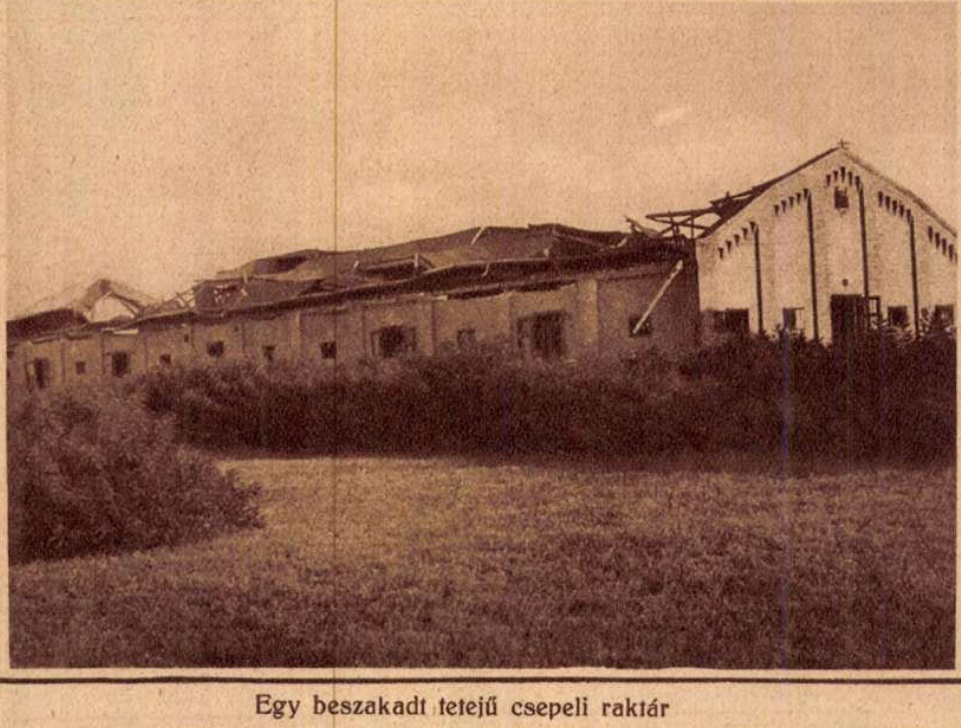 Roofs and windows were mostly destroyed due to the explosion (Source: Pesti Napló Képes Melléklete, 22 August 1926)
Roofs and windows were mostly destroyed due to the explosion (Source: Pesti Napló Képes Melléklete, 22 August 1926)
The newspaper Népszava wrote about the initial huddle of the rescue, the paper claims that there was no one on the factory who could have taken action. In addition, rumors have spread that there are even more wagons of ecrasite in the area that could explode at any time. As it turned out, there was indeed still ecrasite stored underground at the site, but firefighters marching to the scene of the explosion were able to prevent it from exploding.
The strength of the explosion is well shown by the fact that according to the issue of Népszava of 13 August 1926, it could be felt even in Újpest:
“After half an hour, the inhabitants of Csepel, Pesterzsébet, Kispest, Budafok, Soroksár, Tököl, Szigetszentmiklós, Dunaharaszti, Ráckeve, Csép and Csillagtelep felt alarmed that the ground was shaking under their feet, the windows were slamming with the force of the air, they swung open from their gutters, fixtures were overturned, images hung on the wall fell, and walls crumbled. From the rooftops, the tiles shattered all over the yard, the street, animals and people alike were fleeing to the free area in alarm. The explosion in Csepel had such a terrible force that people fell on the open street in Tököl and even in Újpest they felt earthquake-like shocks. ”
Due to the explosion, many houses became uninhabitable, and these families were temporarily housed in the surrounding villages and in schools in Budapest. The number of wounded was about 300, many of them with only minor injuries caused by shards of glass. 30 people were treated in István Hospital and 26 in Csepel Hospital.
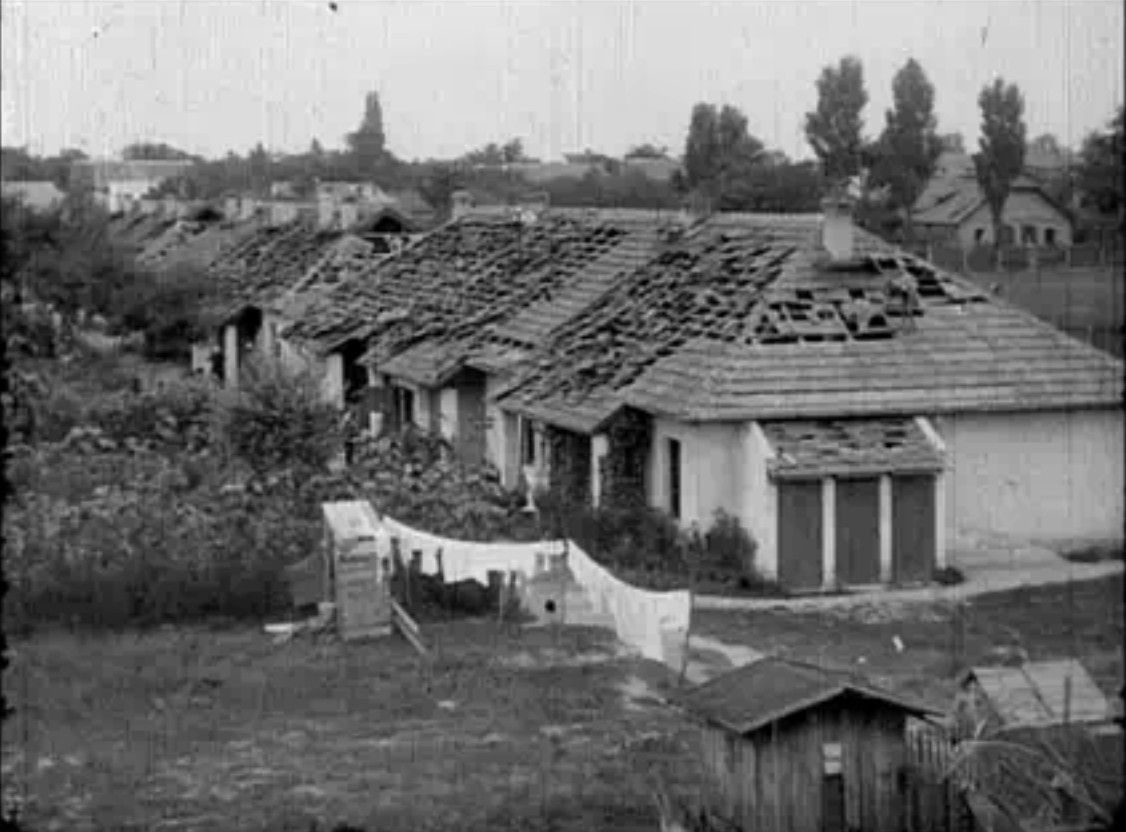 The force of the detonation swept the tiles off the houses (Source: National Film Institute)
The force of the detonation swept the tiles off the houses (Source: National Film Institute)
The investigation started immediately, mostly to find out if there had been an intentional sabotage or accident. The situation was also very delicate because the post-Trianon government was bound by the peace treaty in the production of munitions and their accumulable amount. However, not long before, in 1924, it became clear that the government was producing more munitions than allowed in civilian plants.
The investigation eventually concluded that no accident had occurred, the explosion was deliberately caused. There is ample evidence for this; eyewitnesses, such as the owner of a nearby fishing tavern, had already seen a fire at the site of a subsequent disaster before the explosion.
The Friss Ujság wrote on 18 August 1926, that there had been an attempt in the past to blow up the stockpile of munitions, and the committee of experts ruled out the causes of self-ignition and other accidents, so it was clearly sabotage.
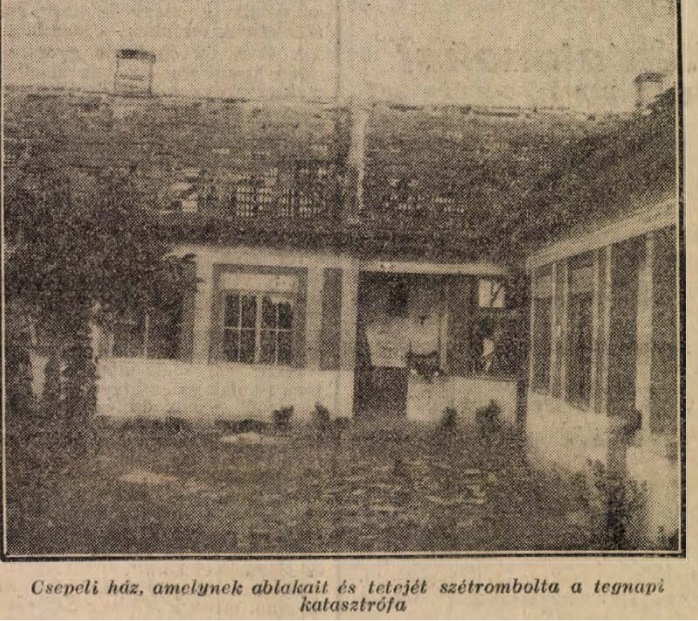
Despite the destruction, there were no fatalities (Source: Magyarország, 14 August 1926)
However, this was not accepted by many, mostly debated on the opposition side and in the columns of the Népszava. Namely, they feared that the government would refrain from compensating, citing a deliberate explosion, and others feared political retaliation. It is a fact that almost everyone was checked by police in Csepel, and there was an extensive investigation into possible subversives. The payment of compensations also dragged on, many complained that they had received nothing, and it was not until the end of 1927 that the government finally settled the matter.
The official statement about the sabotage was later confirmed, as in 1971, in the 2nd annual issue of the Hadtörténeti Közlemények, it wrote:
"Excessive accumulation was found and experts said the gunpowder was blown up with petrol or a fuse."
Cover photo: Many houses were damaged in the explosion in Csepel (Source: Pesti Napló Képes Melléklete, 22 August 1926)

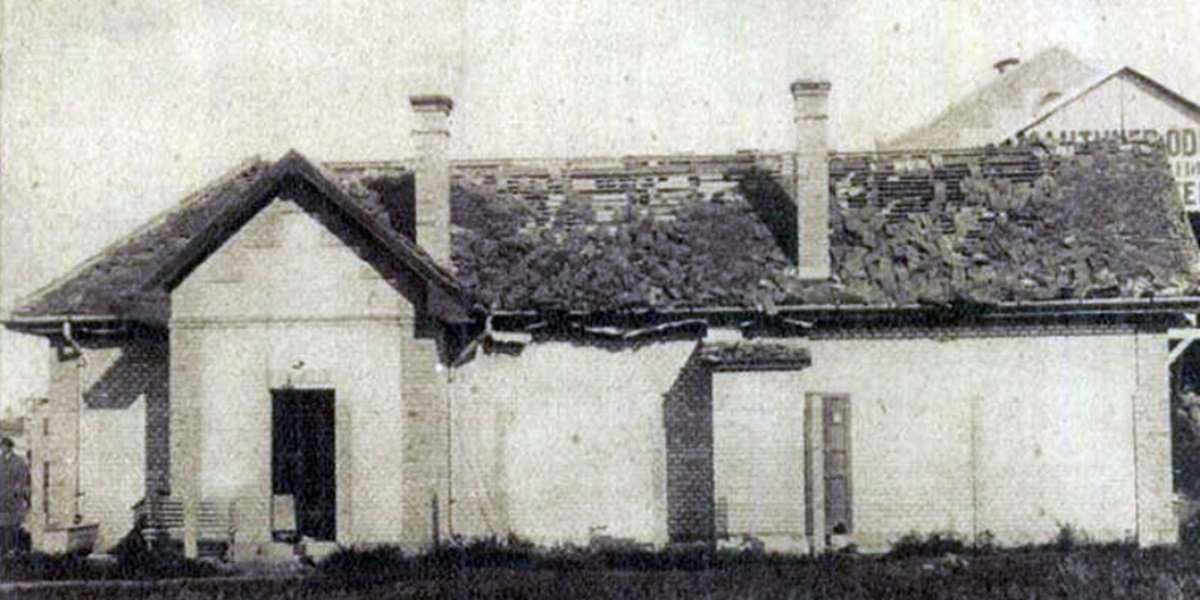


































Hozzászólások
Log in or register to comment!
Login Registration